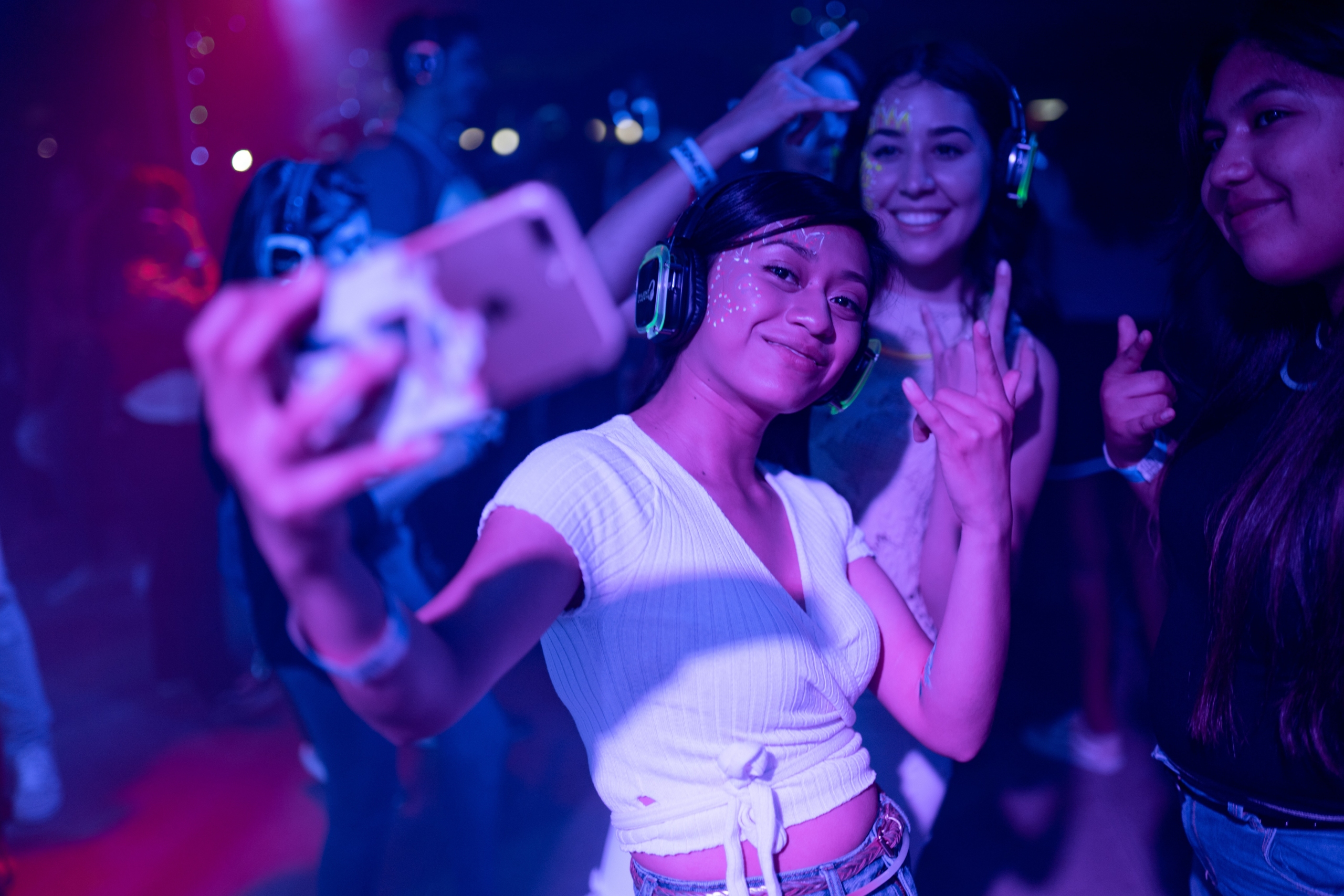
8 essential lighting systems for DJs
What lighting system should a DJ have? You have surely asked yourself more often exactly this question. In this article I want to tell you about the different types of lighting systems and explain why you should have a DJ lighting system. Here are the 8 essential lighting systems for DJs
8 essential lighting systems for DJs
A DJ should have a lighting system that enhances the atmosphere and mood of their performance. The type of lighting system that a DJ needs can vary depending on the venue and the type of event they are performing at, but here are some essential lighting options:
1. Wash Lights
These lights provide a broad, even coverage of light across the dance floor, and can be used to create a dynamic backdrop for the DJ.
Wash lights are a type of lighting fixture that are commonly used in stage productions, concerts, and other events. They are called “wash” lights because they provide a broad, even coverage of light across a large area, such as a stage or dance floor.
Wash lights typically feature a large number of LEDs or bulbs that can be individually controlled to create a variety of colors and effects. They can be used to create a dynamic and visually interesting backdrop for performers or speakers, and can be used to create a variety of moods and atmospheres.
One of the advantages of wash lights is that they can be used to create a wide range of colors and color combinations, which can be used to highlight specific elements of a performance or to create a specific mood or atmosphere. They can also be used to create subtle changes in lighting that can help to keep the audience engaged and focused on the performance.
Overall, wash lights are an essential part of any lighting system for a stage production or event, and can be used in a variety of creative ways to enhance the visual impact of the performance. Let’s move on with the 8 essential lighting systems for DJs.
2. Spotlights
These lights can be used to highlight specific areas of the dance floor or to spotlight specific dancers or performers.
Spotlights are a type of lighting fixture that are used to highlight specific areas or subjects on a stage or in a performance setting. They are typically more focused than other types of lighting, and are designed to provide a concentrated beam of light that can be directed at a specific location or performer.
Spotlights come in a variety of styles and sizes, and can be mounted on the ceiling or on a tripod stand, depending on the specific needs of the performance. They are often used in conjunction with other types of lighting, such as wash lights or moving head lights, to create a dynamic and visually interesting performance.
One of the advantages of spotlights is that they can be used to highlight specific performers or elements of a performance, such as a soloist or a key piece of scenery. They can also be used to create dramatic effects, such as highlighting a specific dancer during a performance or creating a dramatic silhouette effect.
Overall, spotlights are an essential part of any lighting system for a stage production or event, and can be used in a variety of creative ways to enhance the visual impact of the performance.
Let’s move on with the 8 essential lighting systems for DJs.
3. Moving Head Lights
These lights can be programmed to move and change color, creating a dynamic and exciting visual element to the DJ’s performance.
Moving head lights are a type of lighting fixture commonly used in stage productions, concerts, and other events. They are called “moving head” lights because they can be programmed to move and change direction, allowing them to create a dynamic and visually interesting performance.
Moving head lights typically feature a series of LED or bulb lights that are mounted on a motorized head, allowing them to be tilted, rotated, and moved around the stage. They can be programmed to change color, shape, and intensity, and can be synchronized with music or other elements of the performance.
One of the advantages of moving head lights is that they can be used to create a wide range of effects and moods, from subtle changes in lighting to dramatic and dynamic displays. They can be used to create movement and patterns across the stage, and can be used to highlight specific performers or elements of the performance.
Overall, moving head lights are an essential part of any lighting system for a stage production or event, and can be used in a variety of creative ways to enhance the visual impact of the performance.
Let’s move on with the 8 essential lighting systems for DJs.
4. Laser Lights
These lights can create a high-energy atmosphere by projecting laser beams across the dance floor. However, it’s important to note that lasers can be potentially dangerous if not used properly, so it’s important for a DJ to take proper precautions when using them.
Laser lights are a type of lighting fixture commonly used in stage productions, concerts, and other events. They are called “laser” lights because they use lasers to create a concentrated beam of light that can be used to create a variety of visual effects.
Laser lights typically feature one or more lasers that are mounted inside the fixture and can be directed and controlled using a computer or other device. They can be used to create a wide range of effects, including beams of light, patterns, and shapes that can be projected onto surfaces or into the air.
One of the advantages of laser lights is that they can create highly precise and controlled effects, making them ideal for creating intricate and visually stunning displays. They can also be synchronized with music or other elements of the performance to create a more immersive and dynamic experience for the audience.
However, it is important to note that laser lights can be potentially hazardous if not used properly, as they can cause eye damage and other health risks. As a result, they should only be used by trained professionals who are familiar with proper safety procedures and guidelines.
Overall, laser lights are an essential part of any lighting system for a stage production or event, and can be used in a variety of creative ways to enhance the visual impact of the performance. Let’s move on with the 8 essential lighting systems for DJs.
5. Strobe Lights
These lights can create a flashing effect that can be used to emphasize the beat of the music and create a high-energy atmosphere.
Strobe lights are a type of lighting fixture commonly used in stage productions, concerts, and other events. They are called “strobe” lights because they use short, bright flashes of light to create a flashing or flickering effect.
Strobe lights typically feature one or more high-intensity bulbs or LEDs that can be programmed to flash at a specific rate or interval. They can be used to create a wide range of effects, from a subtle flicker to a rapid-fire strobe effect, depending on the needs of the performance.
One of the advantages of strobe lights is that they can create a highly dynamic and visually striking effect that can be synchronized with music or other elements of the performance. They can be used to create a sense of excitement and energy, and can be used to highlight specific performers or elements of the performance.
However, it is important to note that strobe lights can be potentially hazardous, especially for individuals who are prone to seizures or have other sensitivities to flashing lights. As a result, they should be used with caution and only by trained professionals who are familiar with proper safety procedures and guidelines.
Overall, strobe lights are an essential part of any lighting system for a stage production or event, and can be used in a variety of creative ways to enhance the visual impact of the performance. Let’s move on with the 8 essential lighting systems for DJs.
6. LED Panels
These panels can be used to create custom patterns and visuals, and can be synchronized with the music to create a dynamic visual experience.
DJ LED panels are a type of lighting fixture commonly used by DJs and other performers to create visually stunning displays during their performances. These panels typically consist of a series of LED lights mounted on a flat surface, which can be programmed to display a wide range of colors and patterns.
One of the advantages of DJ LED panels is that they are highly customizable and versatile, allowing performers to create unique and dynamic displays that can be synchronized with the music or other elements of the performance. They can be used to create moving patterns, display images or text, or even to simulate video screens.
DJ LED panels can be mounted on walls, floors, or other surfaces, and can be configured in a variety of shapes and sizes depending on the needs of the performance. They can be controlled using a computer or other device, and can be programmed to change color and pattern in response to the music or other inputs.
Overall, DJ LED panels are an essential part of any lighting system for a DJ or performer, and can be used in a variety of creative ways to enhance the visual impact of the performance and create a memorable experience for the audience. Let’s move on with the 8 essential lighting systems for DJs.
7. Fog/Haze Machines
These machines can be used to create a misty or hazy atmosphere, which can enhance the visual impact of the lighting and create a more immersive experience for the audience.
Fog/haze machines are a type of special effects equipment commonly used in concerts, theatrical productions, and other events to create atmospheric effects. These machines work by heating a special liquid, such as glycol or mineral oil, to create a fog or haze effect.
Fog machines work by heating the liquid to a high temperature, which causes it to vaporize and produce a thick fog that can be used to create a spooky or mysterious atmosphere. Haze machines, on the other hand, create a much lighter, more subtle effect, producing a fine mist that hangs in the air and creates a sense of depth and texture.
Both fog and haze machines can be used to enhance the lighting effects in a performance, allowing the lights to be more clearly visible and creating a more immersive experience for the audience. They can be controlled using a variety of methods, such as a remote control, a DMX controller, or even a smartphone app, and can be programmed to create a wide range of different effects.
It is important to note that fog/haze machines can produce a large amount of smoke or vapor, which can be potentially hazardous if used in an enclosed space or if proper safety precautions are not taken. As a result, it is important to follow all safety guidelines and use these machines only under the supervision of trained professionals. Let’s move on with the 8 essential lighting systems for DJs.
8. DMX Lightning
DMX lighting is a system that allows for the control of multiple lighting fixtures using a single DMX controller. DMX stands for Digital Multiplex, and it is a communication protocol that allows for the transmission of digital signals over a network.
In DMX lighting, each lighting fixture is assigned a unique DMX address, which is typically a number between 1 and 512. The DMX controller sends digital signals to each fixture, telling it what color to display, how bright to be, and other parameters.
One of the advantages of DMX lighting is that it allows for the precise control of multiple lighting fixtures, making it ideal for use in large-scale productions such as concerts, theatrical performances, and dance parties. DMX lighting fixtures can include moving head lights, wash lights, spotlights, and other types of lighting equipment.
DMX controllers can come in a variety of forms, ranging from simple handheld units to complex computer software programs. Some DMX controllers can be programmed to create custom lighting effects, while others are pre-programmed with a wide range of built-in effects.
Overall, DMX lighting is a powerful and versatile tool for creating dynamic and visually stunning lighting displays, and it has become an essential part of the toolkit for many lighting designers and production professionals. Let’s move on with the 8 essential lighting systems for DJs.
Final thoughts
These 8 essential lighting systems for DJs every DJ should know and be able to master these light systems in order to be prepared on all sides. Who has the necessary change, builds up in the course of time a reasonable repertoire, which includes all these light systems. With a reasonable DMX controller you then switch a DMX universe to operate all lighting systems. This theme is very complex, you can give free rein to your creativity and program the most diverse combinations and shows to create a unique lighting spectacle.



